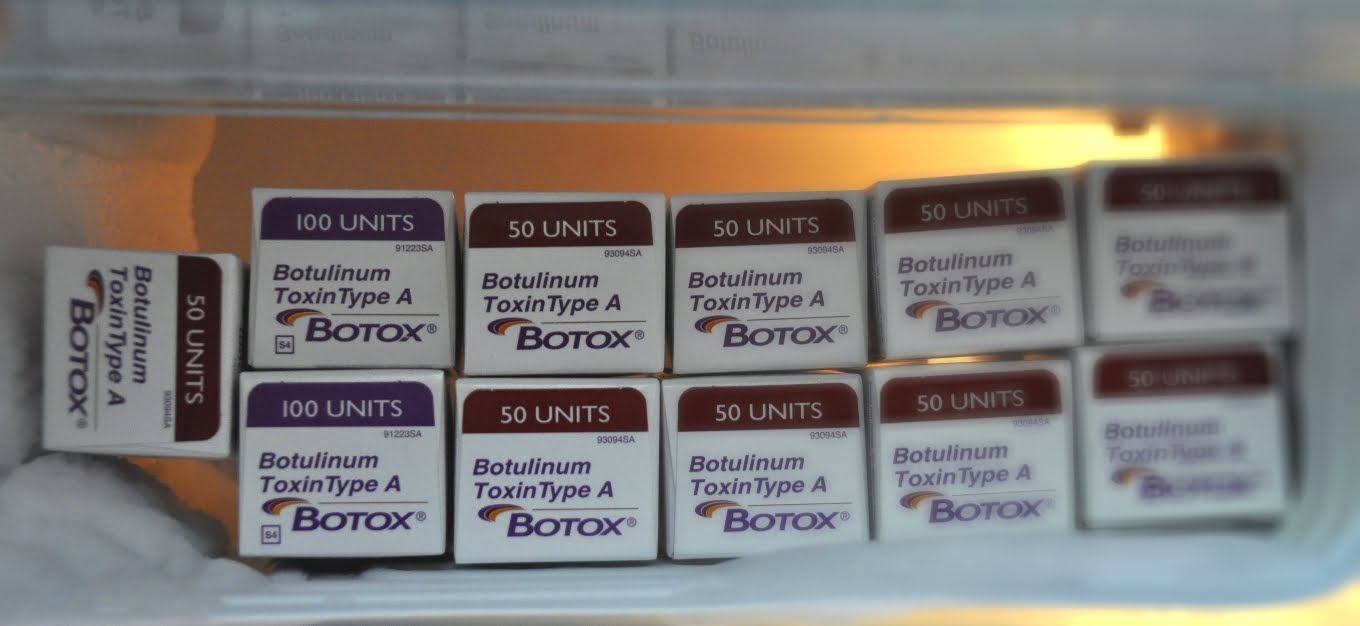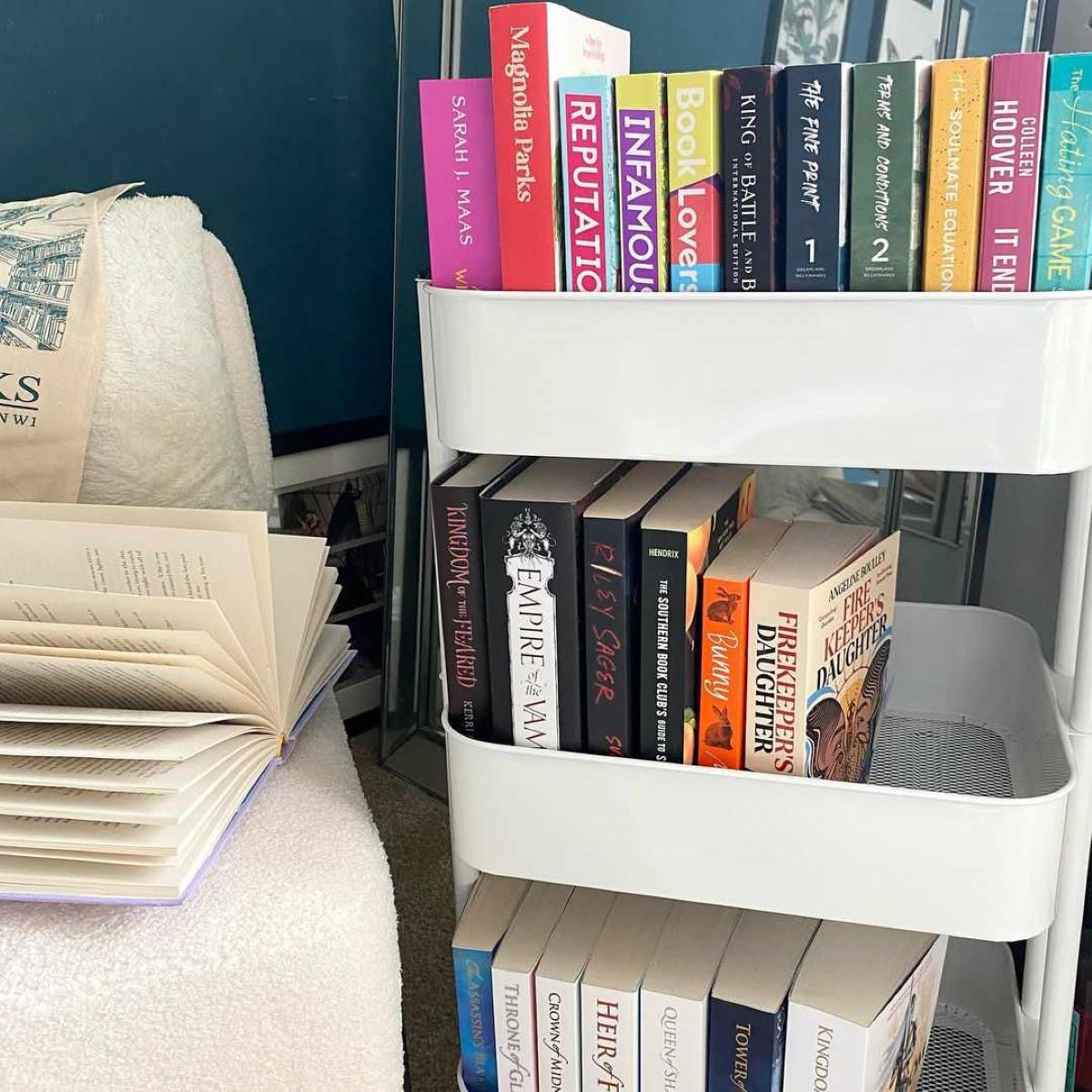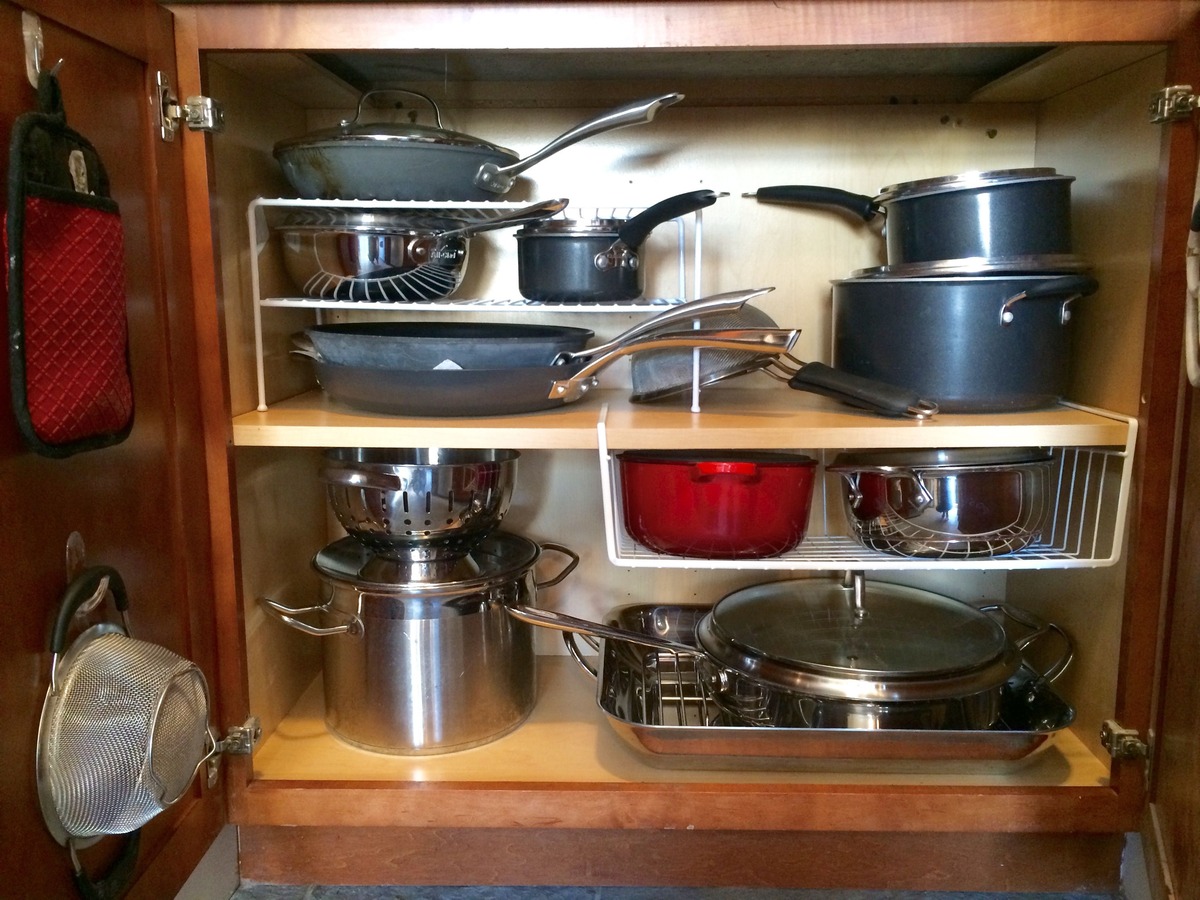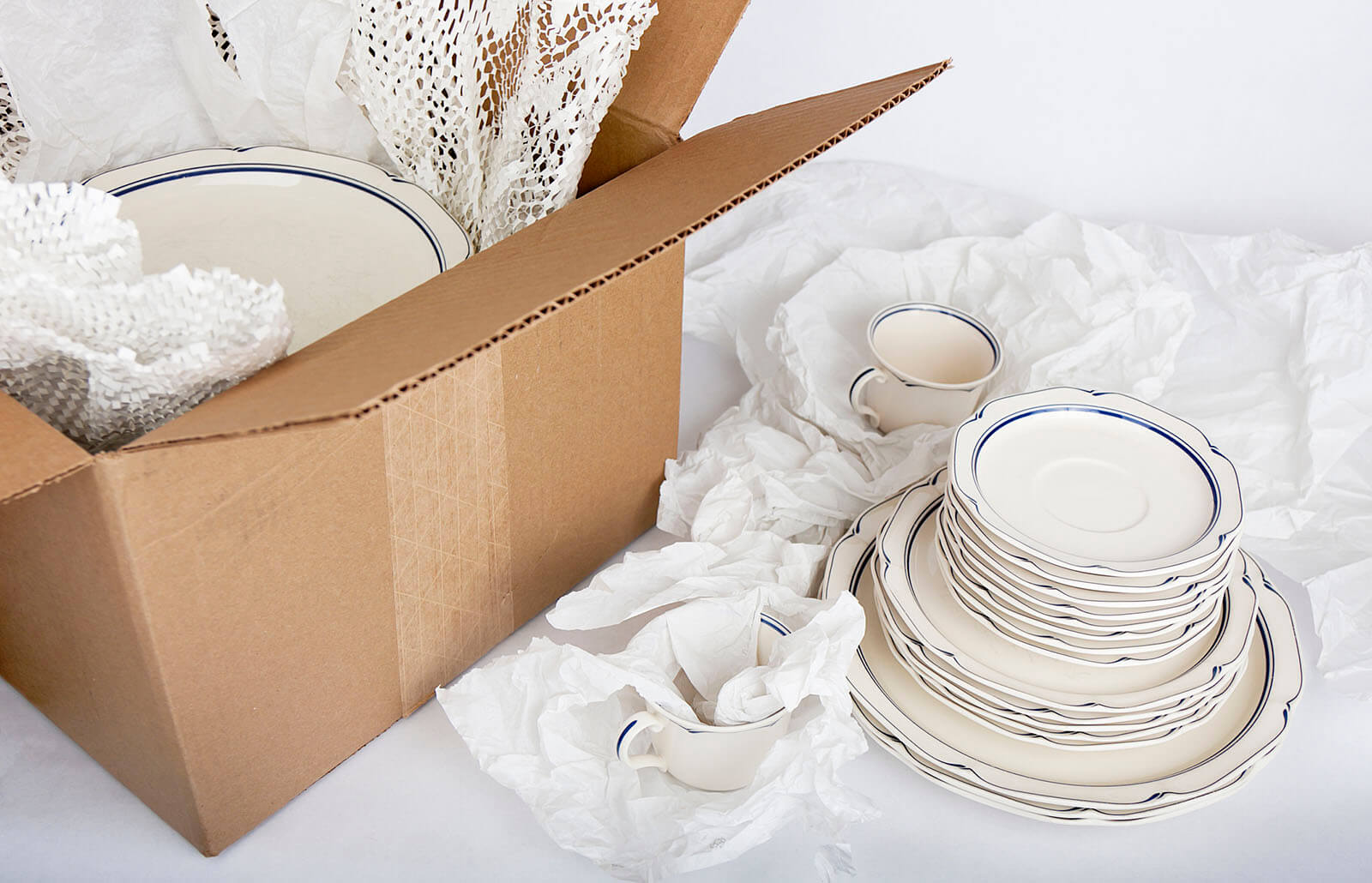

Articles
How To Store Botox
Modified: January 5, 2024
Learn the best tips and tricks for storing Botox and keeping it fresh in this informative articles. Ensure the longevity and potency of your Botox with proper storage techniques.
(Many of the links in this article redirect to a specific reviewed product. Your purchase of these products through affiliate links helps to generate commission for Storables.com, at no extra cost. Learn more)
Introduction
Welcome to the world of cosmetic enhancements and anti-aging treatments. In recent years, Botox has gained immense popularity as a non-invasive solution for minimizing wrinkles and achieving a more youthful appearance. As a medical professional or spa owner, you understand the importance of proper storage and handling when it comes to preserving the quality and effectiveness of this valuable product.
In this article, we will explore the essential factors to consider for storing Botox safely and effectively. From understanding the basics of Botox to creating an ideal storage environment and complying with regulations, we will cover all the necessary steps to ensure the longevity and efficacy of your Botox supply.
Proper storage not only extends the shelf life of Botox but also maintains its potency and ensures patient safety. By implementing best practices and avoiding common mistakes, you can optimize the storage conditions and maximize the results of your Botox treatments.
So, whether you are a seasoned professional or new to the world of Botox, this guide will provide you with the knowledge and expertise needed to store Botox effectively and efficiently.
Key Takeaways:
- Proper storage of Botox is crucial for maintaining its potency and safety. From temperature control to proper handling, following best practices ensures optimal treatment outcomes and patient satisfaction.
- Avoiding common storage mistakes, such as temperature deviations and inadequate documentation, is essential for preserving the quality and efficacy of Botox. Implementing best practices and staying compliant with regulations are key to success.
Read more: How To Store Unopened Botox
Understanding the Basics of Botox
Before discussing the storage of Botox, it’s important to have a fundamental understanding of what Botox is and how it works. Botox is a brand name for a neurotoxin called botulinum toxin type A. It is derived from a bacterium called Clostridium botulinum.
When injected into the muscles, Botox blocks nerve signals, causing temporary muscle paralysis. This muscle paralysis relaxes facial muscles, reducing the appearance of wrinkles and fine lines. Botox is commonly used to treat facial wrinkles, such as crow’s feet, frown lines, and forehead wrinkles.
It’s essential to note that Botox is a prescription medication and should only be administered by qualified medical professionals. As a medical professional or spa owner, it’s crucial to understand the proper storage and handling requirements to maintain the integrity and effectiveness of Botox.
One important aspect to consider is the storage temperature of Botox. Most Botox products should be stored between 2°C and 8°C (36°F and 46°F). However, it’s important to consult the specific product guidelines as some Botox brands may have different storage temperature requirements.
Additionally, Botox should be stored in its original packaging and protected from light. Exposure to sunlight or artificial light sources can break down the active ingredients in Botox, reducing its potency.
Understanding the basic properties of Botox is crucial for ensuring its effectiveness. By adhering to proper storage guidelines, you can preserve the potency and integrity of Botox, allowing for optimal results and patient satisfaction.
Factors to Consider Before Storing Botox
Prior to storing Botox, there are several factors that should be taken into consideration to ensure its safety and effectiveness. By addressing these factors, you can create an optimal storage environment for Botox.
1. Storage Location: Choose a designated storage area that is clean, dry, and well-ventilated. Avoid storing Botox in areas with extreme temperatures or humidity, such as bathrooms or areas near heating or cooling systems.
2. Security: Ensure that the storage area is secure and inaccessible to unauthorized individuals. Botox is a prescription medication and should only be accessed by medical professionals licensed to administer it.
3. Temperature Control: As mentioned earlier, Botox should be stored within a specific temperature range of 2°C to 8°C (36°F to 46°F). To maintain this temperature, consider investing in a medical-grade refrigerator specifically designed for storing medications.
4. Monitoring System: Implement a temperature monitoring system to ensure that the storage conditions remain within the acceptable range at all times. This can be done using a digital thermometer or an automated monitoring system with real-time alerts.
5. Proper Labeling: Clearly label the storage area for Botox to avoid confusion and prevent accidental misuse. Use labels that indicate the specific storage requirements, such as temperature and light sensitivity.
6. Inventory Management: Keep track of the expiration dates and lot numbers of your Botox products. Use a first-in, first-out (FIFO) system to ensure that the oldest stock is used first, preventing any wastage or expired products.
By considering these factors, you can establish a safe and controlled storage environment for Botox. This not only helps maintain the efficacy of the product but also ensures compliance with medical regulations and guidelines.
Creating an Ideal Storage Environment
To ensure the optimal storage of Botox, it is essential to create an ideal storage environment that meets the specific requirements of this delicate product. Here are some key considerations for creating the perfect storage environment for Botox.
1. Temperature Control: As mentioned earlier, maintaining the recommended temperature range of 2°C to 8°C (36°F to 46°F) is crucial for preserving the potency of Botox. Invest in a medical-grade refrigerator or freezer that offers precise temperature control and has a dedicated section for pharmaceutical storage.
2. Dedicated Storage Area: Designate a specific area in your facility solely for storing Botox. This helps prevent cross-contamination and ensures that the storage conditions are controlled and monitored effectively.
3. Light Protection: Botox is sensitive to light, and exposure to sunlight or artificial light sources can degrade its potency. Keep Botox vials and containers in opaque storage bins or drawers to shield them from light. Alternatively, store them in brown, light-resistant bags or boxes.
4. Humidity Control: Maintain a dry storage environment with low humidity levels. Excessive moisture can lead to the growth of bacteria and affect the integrity of the product. Consider using moisture-absorbing packets or desiccants in the storage area to control humidity.
5. Proper Shelving: Use sturdy, clean, and non-porous shelves to store Botox. Avoid placing Botox directly on the floor, as it can increase the risk of contamination. Consider organizing the shelves in a way that allows easy access and visibility of the products.
6. Air Circulation: Ensure proper air circulation in the storage area to prevent the accumulation of stagnant air. This can be achieved by placing the storage shelves slightly away from the walls and utilizing fans or air vents to promote airflow.
7. Organization and Inventory Management: Maintain a well-organized storage system to facilitate easy access and inventory management. Arrange products by expiration date, lot number, or product type to ensure accurate stock rotation and traceability.
By implementing these measures, you can create an ideal storage environment for Botox, ensuring its longevity, potency, and safety. Remember to regularly monitor and record temperature and humidity levels to maintain optimal storage conditions.
Proper Handling and Packaging of Botox
In addition to creating an ideal storage environment, proper handling and packaging of Botox are critical factors in maintaining its quality and efficacy. Here are some essential guidelines to follow:
1. Clean and Sterile Conditions: Before handling Botox, ensure that your hands and the working area are clean and sanitized. Use gloves and follow proper aseptic techniques to minimize the risk of contamination.
2. Use the Right Tools: Use sterile syringes and needles specifically designed for Botox injections. Disposable, single-use needles and syringes help prevent cross-contamination and ensure patient safety.
3. Avoid Excessive Agitation: Botox is a delicate product that can lose its efficacy if agitated excessively. Avoid shaking or vigorously mixing the vial, as this can disrupt the formulation. Instead, gently invert the vial a few times to reconstitute the powder.
4. Proper Reconstitution: Follow the manufacturer’s instructions for reconstituting Botox. Use the recommended diluent and ensure proper mixing to obtain a homogeneous solution. Incorrect reconstitution can affect the potency and effectiveness of the product.
5. Appropriate Packaging: After reconstitution, transfer the Botox solution into sterile and appropriately labeled vials or syringes. Use packaging that is compatible with pharmaceutical products and ensures a tamper-evident seal.
6. Labeling: Clearly label the vials or syringes with the reconstitution date, expiration date, and the specific concentration or dose of Botox. This helps prevent confusion and ensures accurate administration during treatments.
7. Storage of Reconstituted Botox: If you have leftover reconstituted Botox, it should be stored according to the manufacturer’s instructions. Some Botox products may have specific storage requirements, such as refrigeration, while others may be stored at room temperature.
8. Proper Disposal: Once you have finished using a vial or syringe of Botox, dispose of it properly according to medical waste disposal regulations. Used needles and medical waste must be disposed of in designated biohazard containers to ensure safety.
By adhering to these guidelines, you can ensure the proper handling and packaging of Botox, maintaining its integrity and ensuring its effectiveness during treatments. Remember to follow all safety protocols and guidelines to promote patient safety and minimize the risk of contamination.
Store Botox in the original packaging in a refrigerator between 2-8°C (36-46°F). Keep it away from light and do not freeze. Always check the expiration date before use.
Read more: How To Store Basil From Store
Best Practices for Storing Botox
Ensuring the proper storage of Botox is essential for maintaining its potency and effectiveness. Here are some best practices to follow when storing Botox:
1. Temperature Monitoring: Regularly monitor and record the temperature of the storage area using a digital thermometer or an automated monitoring system. This helps ensure that the storage conditions remain within the recommended range of 2°C to 8°C (36°F to 46°F).
2. Backup Power Supply: Install a backup power supply, such as an uninterruptible power supply (UPS), to prevent temperature fluctuations during power outages. This ensures that the storage environment remains stable and protects the integrity of the Botox.
3. Regular Inspections: Conduct routine inspections of your storage area to check for any signs of damage, leaks, or improper storage conditions. This helps identify potential issues early on and allows for timely corrective measures.
4. Stock Rotation: Follow a first-in, first-out (FIFO) system to ensure that the oldest stock of Botox is used first. This prevents the expiration of products and helps maintain freshness and efficacy.
5. Training and Education: Provide appropriate training to staff members on proper storage procedures and handling techniques. Ensure that they are familiar with the specific storage requirements of Botox and understand the importance of following storage guidelines.
6. Quality Assurance: Implement a quality assurance program to periodically assess the storage conditions, inventory management, and adherence to storage protocols. Regularly review and update your storage policies and procedures to stay in line with industry best practices.
7. Proper Documentation: Keep detailed records of temperature logs, inventory records, and any corrective actions taken in case of deviations or incidents. This documentation helps demonstrate compliance with storage regulations and serves as a reference for audits or inspections.
8. Communication with Suppliers: Maintain open lines of communication with Botox suppliers to stay informed about any updates or changes in storage requirements. Stay updated on product recalls or warnings, and promptly address any issues related to product quality or storage conditions.
By following these best practices, you can ensure that your Botox inventory is stored optimally, maintaining its quality and effectiveness. Proper storage practices not only extend the shelf life of Botox but also contribute to optimal treatment outcomes and patient satisfaction.
Monitoring and Maintaining Botox Storage Conditions
Consistently monitoring and maintaining the storage conditions of Botox is crucial for ensuring its potency and efficacy. Here are some important steps to follow:
1. Temperature Monitoring: Regularly monitor the temperature of the storage area using a digital thermometer or an automated monitoring system. Record the temperature at least twice a day, ensuring that it stays within the recommended range of 2°C to 8°C (36°F to 46°F).
2. Temperature Fluctuations: Be vigilant about temperature fluctuations that could compromise the integrity of Botox. Keep a log of any temperature excursions or deviations from the recommended range, and take immediate corrective actions if necessary.
3. Calibration of Equipment: Ensure that the temperature monitoring equipment, such as the thermometer or data logger, is calibrated regularly according to manufacturer recommendations. This helps maintain accuracy and reliability in temperature readings.
4. Regular Maintenance: Schedule regular maintenance and servicing of the storage equipment, such as refrigerators or freezers, to ensure proper functioning and temperature control. Clean the equipment periodically to prevent dust buildup or contamination.
5. Power Outages: In the event of a power outage, take precautions to protect the integrity of Botox. Keep the storage area closed to maintain temperature stability as long as possible. If the power outage is prolonged, consider transferring the Botox to a backup unit or an alternative refrigeration facility.
6. Temperature Excursion Response Plan: Develop a response plan in case of temperature excursions or equipment failure. This plan should outline the steps to take, such as notifying the responsible personnel, recording the incident, and implementing corrective actions to minimize any potential impact on Botox quality.
7. Receiving and Storage Inspections: Conduct regular inspections of incoming shipments of Botox to ensure proper packaging and temperature control during transit. Check for any signs of damage or mishandling and refuse delivery if necessary. Inspect each vial or package for integrity before transferring them to the storage area.
8. Training and Education: Provide training to staff members on proper monitoring procedures and the importance of maintaining storage conditions. Ensure that they understand the proper handling and storage protocols and can identify any signs of compromised storage conditions.
9. Documentation: Keep thorough records of temperature logs, maintenance schedules, and any temperature excursions or incidents. Document corrective actions taken, including any investigations conducted and preventive measures implemented to address the root cause.
By implementing these measures, you can effectively monitor and maintain the storage conditions of Botox. This ensures that the product remains potent and effective, providing optimal results to patients and complying with regulatory requirements.
Ensuring Safety and Compliance with Regulations
When storing Botox, it is crucial to prioritize safety and adhere to regulations set forth by relevant authorities. Here are some essential steps to ensure safety and compliance:
1. Know the Regulations: Familiarize yourself with the regulations governing the storage and handling of Botox in your jurisdiction. Understand the guidelines provided by health regulatory agencies, such as the Food and Drug Administration (FDA) in the United States or the Medicines and Healthcare products Regulatory Agency (MHRA) in the United Kingdom.
2. Licensing and Permits: Ensure that you and your facility have the necessary licenses and permits to handle and store prescription medical products like Botox. Comply with the requirements set by regulatory bodies to prevent legal implications and maintain patient safety.
3. Product Authentication: Only source Botox from reputable suppliers or directly from the manufacturer to avoid counterfeit or compromised products. Verify the authenticity of the Botox by checking for appropriate labeling, holograms, or unique identifiers provided by the manufacturer.
4. Quality Assurance: Implement quality assurance procedures, such as regular inspections, temperature monitoring, and reviewing product documentation, to ensure compliance with quality standards. Regularly audit your storage practices and procedures to identify areas for improvement and ensure adherence to regulations.
5. Staff Training: Educate and train staff members on proper storage protocols, handling techniques, and regulatory requirements. Ensure they understand the importance of accurate documentation, proper disposal of medical waste, and maintaining a clean and organized storage area.
6. Product Recall Awareness: Stay informed about any product recalls or alerts related to Botox. Regularly check for updates from manufacturers and regulatory agencies. If a recall occurs, follow the necessary steps to identify, quarantine, and return any affected Botox stock promptly.
7. Adverse Event Reporting: Familiarize yourself with the reporting requirements for adverse events associated with Botox. Promptly report any adverse reactions or incidents to the appropriate regulatory authority as outlined in the regulations. This helps maintain patient safety and contributes to ongoing product surveillance.
8. Documentation and Record-Keeping: Maintain detailed records of your storage practices, temperature logs, product documentation, training sessions, and any regulatory inspections or audits. These records demonstrate your commitment to compliance and can serve as documentation during regulatory inspections or audits.
By ensuring safety and compliance with regulations, you not only protect your patients but also maintain the integrity of your practice or facility. Stay updated on regulatory changes, engage in ongoing education, and prioritize safety in every aspect of Botox storage and handling.
Common Mistakes to Avoid when Storing Botox
Proper storage of Botox is crucial for maintaining its efficacy and safety. To ensure that you’re storing Botox correctly, it’s important to avoid common mistakes that can compromise its quality. Here are some common mistakes to avoid when storing Botox:
1. Improper Temperature Control: One of the biggest mistakes is failing to maintain the recommended storage temperature of 2°C to 8°C (36°F to 46°F). Deviating from this temperature range can degrade the potency of Botox. Regularly monitor and record the temperature to ensure it remains within the acceptable range.
2. Inadequate Documentation: Failing to maintain proper documentation of temperature logs, inventory records, and any incidents can hinder effective storage management. Accurate and complete documentation is crucial for regulatory compliance and demonstrating adherence to storage guidelines.
3. Not Rotating Stock: Neglecting to implement a first-in, first-out (FIFO) system can lead to expired Botox products. Ensure that you use the oldest stock first to minimize wastage and maintain product freshness.
4. Poor Organization: Disorganized storage areas can lead to confusion and mistakes. Ensure that Botox vials are properly labeled, and arrange them in a logical and organized manner for easy access and inventory management.
5. Lack of Training: Insufficient training for staff members regarding proper storage procedures, handling techniques, and documentation can lead to mistakes. Invest in training programs to ensure that all individuals involved in the storage process are knowledgeable and capable of following proper storage guidelines.
6. Improper Packaging: Inadequate packaging can expose Botox to light, which can diminish its potency. Ensure that Botox vials are stored in opaque containers or light-resistant packaging to protect them from light exposure.
7. Overlooking Expiration Dates: Using Botox products past their expiration dates can lead to ineffective and potentially harmful treatments. Regularly check the expiration dates of your stock, and discard any expired Botox products.
8. Inadequate Security Measures: Failing to implement proper security measures can put your Botox supply at risk. Ensure that your storage area is secure and accessible only to authorized personnel to prevent theft or tampering.
By avoiding these common mistakes, you can maintain the potency, safety, and efficacy of your Botox products. Implementing proper storage procedures, training your staff, and staying organized are key to ensuring that your Botox supply remains in optimal condition for successful treatments.
Read more: How To Store Store-Bought Bread
Conclusion
Proper storage of Botox is essential for maintaining its potency, safety, and effectiveness. By following the guidelines and best practices outlined in this article, you can create an ideal storage environment, monitor and maintain storage conditions, and ensure compliance with regulations.
Understanding the basics of Botox and its specific storage requirements is the first step in ensuring its longevity and efficacy. Creating a dedicated and well-controlled storage area, maintaining proper temperature control, and protecting Botox from light and humidity are crucial for preserving its quality.
Proper handling and packaging techniques are equally important. Following aseptic practices, using sterile equipment, and labeling the vials accurately contribute to maintaining the integrity of Botox throughout its storage and administration.
To maintain the safety and compliance of your Botox supply, it’s important to monitor and document storage conditions consistently. Regular inspections, calibration of equipment, and adherence to regulatory guidelines are essential for ensuring patient safety and regulatory compliance.
Avoiding common mistakes, such as improper temperature control, inadequate documentation, poor organization, and neglecting to rotate stock, further contributes to the overall quality and longevity of Botox products.
By implementing these best practices, you can optimize the storage of Botox, prolong its shelf life, and deliver safe and effective treatments to your patients. Remember to stay informed about any regulatory updates, train your staff, and prioritize the safety and satisfaction of your patients.
As a medical professional or spa owner, your commitment to proper storage and handling of Botox showcases your dedication to offering high-quality treatments and maintaining the trust of your patients. By following the guidelines outlined in this article, you can ensure that your supply of Botox remains in optimal condition and continues to deliver exceptional results.
Frequently Asked Questions about How To Store Botox
Was this page helpful?
At Storables.com, we guarantee accurate and reliable information. Our content, validated by Expert Board Contributors, is crafted following stringent Editorial Policies. We're committed to providing you with well-researched, expert-backed insights for all your informational needs.














0 thoughts on “How To Store Botox”